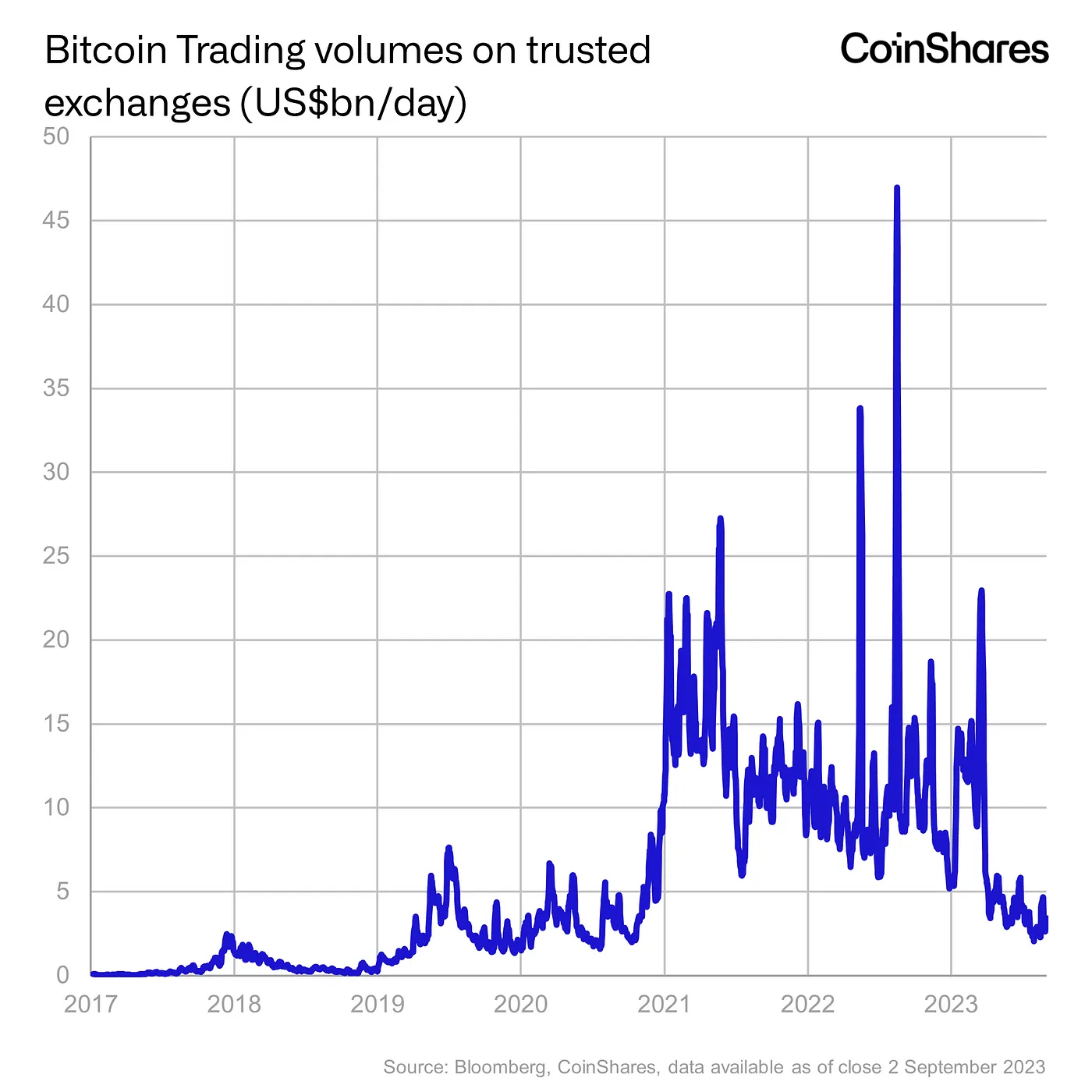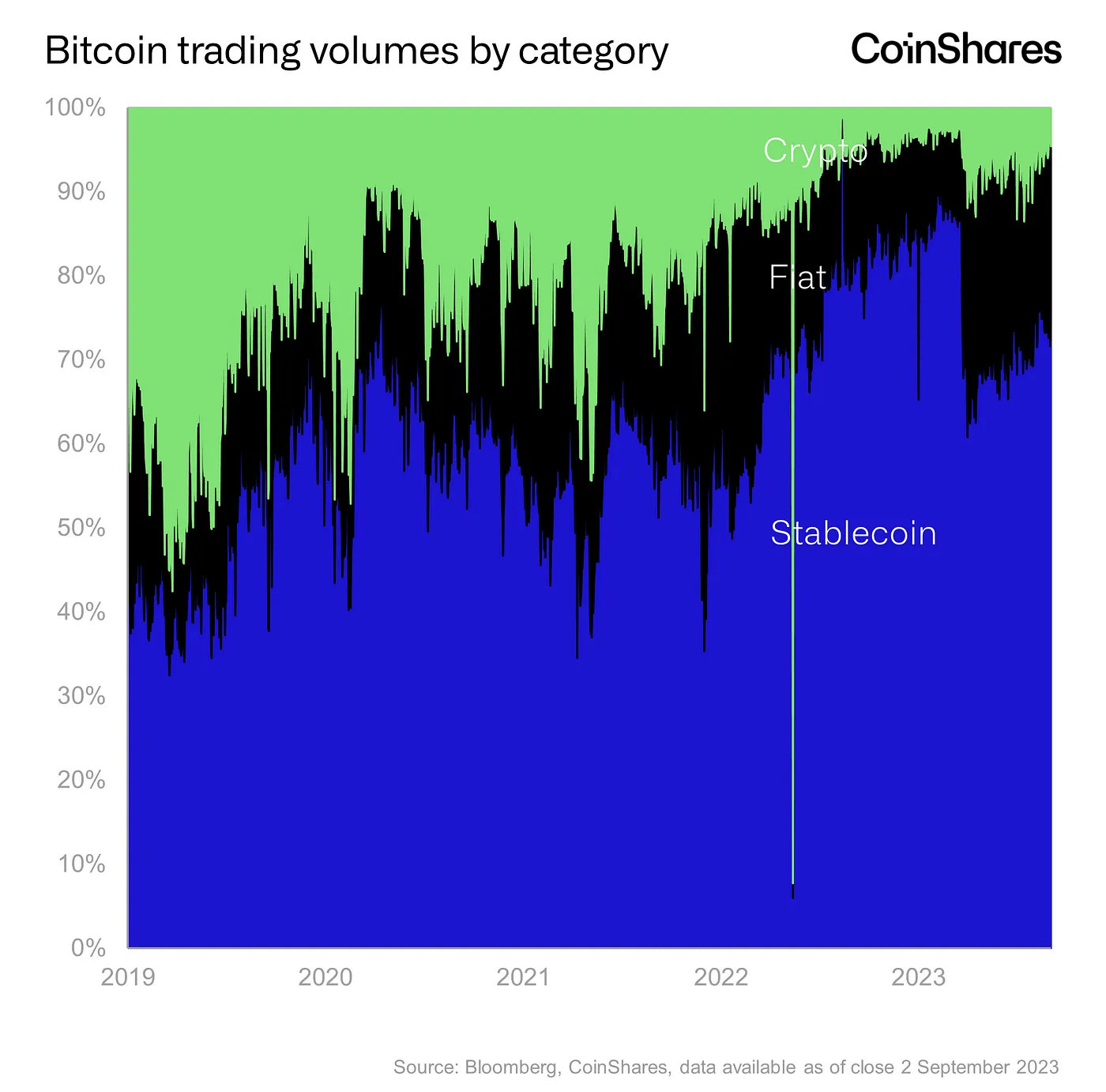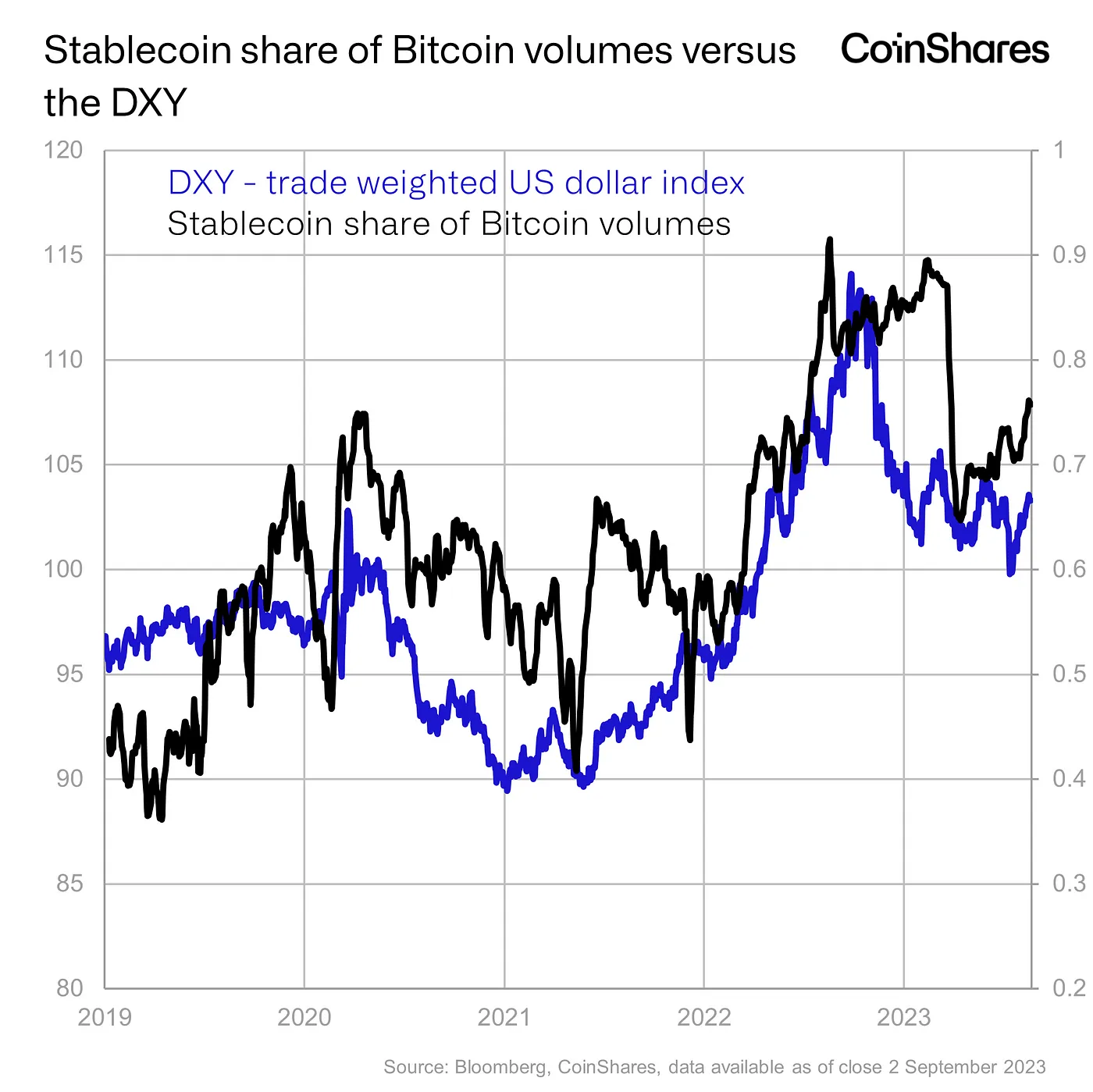- On average, this year, transactions involving Bitcoin resulted in approximately $7 billion worth of trading volume on centralized exchanges, significantly lower than the figures of $13.8 billion and $11 billion in 2021 and 2022, respectively.
- The beginning stage of the 2021 bull market was supported by transactions involving altcoins and fiat currencies. However, towards the end of 2021, there was a sudden increase in appetite for USD-backed stablecoins. This trend continued throughout the first quarters of 2022 and 2023.
- According to a previous report published by Kaiko, the free trading volume constituted a significant portion of Binance’s total volume until mid-2023, almost 66%.
What are the factors triggering the decrease in trading volumes of Bitcoin in 2023?
Bitcoin is No Longer as Volatile
In 2023, Bitcoin is not the same as before. Record-low volatility, weak exchange volumes, and indifference among daily traders have become the norm for the asset class that many people built their wealth on during the 2020-21 bull market.
James Butterfill, the Research Head of digital asset investment firm Coinshares, quoted information from the organization’s trading team to emphasize that market makers and retail traders have been consistently exiting exchanges in recent months. “Some are no longer working daily, but only for five days a week,” Butterfill added.
A look at the daily trading volume in 2023 was sufficient to make a comparison. On average, transactions involving Bitcoin resulted in approximately $7 billion worth of trading volume on centralized exchanges, significantly lower than the figures of $13.8 billion and $11 billion in 2021 and 2022, respectively.
There was a significant decrease in trading volume, particularly from the second quarter of 2023, reminiscent of the pre-2019-20 bull market period.
While highlighting some interesting findings about the reasons behind the decrease in trading activity, Butterfill pointed out some fascinating discoveries when explaining the underlying causes of the decline.
Decreased Demand for USD-backed Stablecoins
As seen below, the beginning stage of the 2021 bull market was supported by transactions involving altcoins and fiat currencies. However, towards the end of 2021, there was a sudden increase in appetite for USD-backed stablecoins. This trend continued throughout the first quarters of 2022 and 2023.
This growing demand for stablecoins and thus USD coincided randomly with the start of the Federal Reserve’s interest rate hike cycle. In March 2022, the central bank approved its first interest rate hike after more than three years as part of its efforts to combat inflation.
Due to the interest rate hikes by the Fed, there was an increase in demand for the dollar from foreign investors, creating significant upward pressure on the U.S. Dollar Index (DXY).
Naturally, the strengthening USD led investors worldwide to liquidate their Bitcoin assets in favor of stablecoins. Note the strong correlation between the market share of stablecoins in Bitcoin trading volume and the DXY during that period.
However, inflation in the United States slowed down comparatively in 2023, and this led to a sharp decline in the DXY, and consequently, high stablecoin volumes rapidly decreased, with hopes of the end of the Fed’s aggressive tightening cycle.
Decline Led by Binance
The low spot Bitcoin trading volume partially explains the decrease in Bitcoin trading activity, but there were also other notable factors. Ironically, the world’s largest cryptocurrency exchange, Binance, was one of the main contributors to the decline.
This decline was due to the termination of Binance’s free trading program earlier this year. According to a previous report published by Kaiko, the free trading volume constituted a significant portion of Binance’s total volume until mid-2023, almost 66%. It should be noted that Binance managed to capture a significant share from competitors after introducing an attractive program.
In addition, the increased strict stance adopted by U.S. regulators towards crypto participants also had an impact. Binance was under the radar of the U.S. Securities and Exchange Commission (SEC) in 2023, and the commission initiated a lawsuit against the crypto giant in June.
The fear of a situation similar to FTX, where many people were excluded from the exchange, led to a gradual withdrawal from Binance. Furthermore, the significant decrease in Binance USD (BUSD) volume due to regulatory intervention contributed to Binance’s difficulties in 2023.




